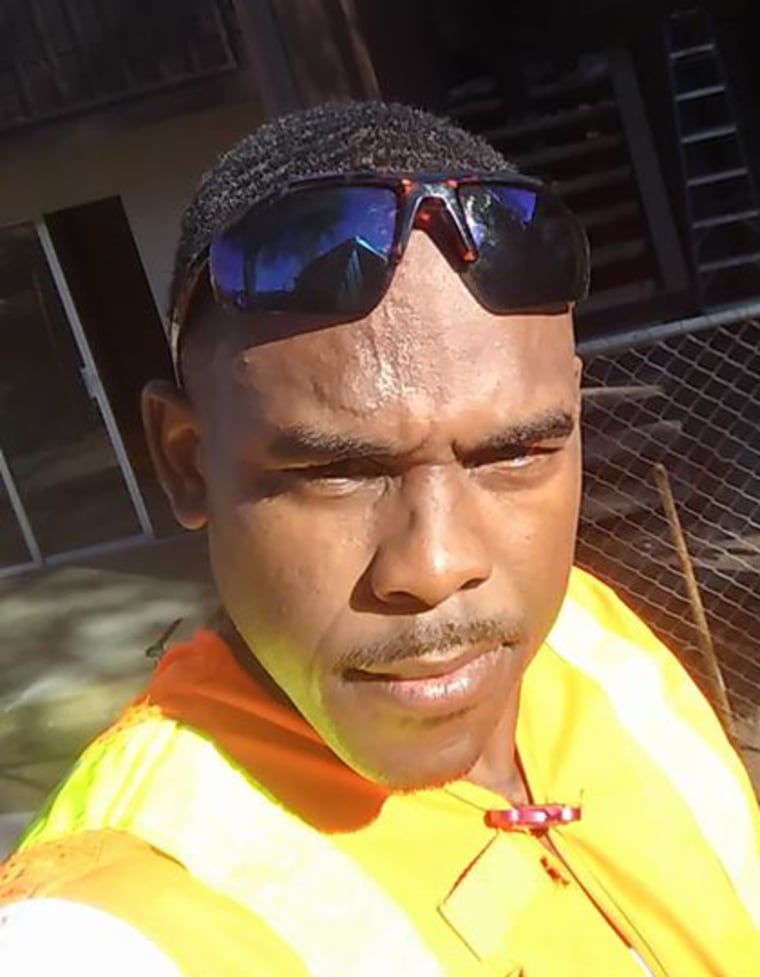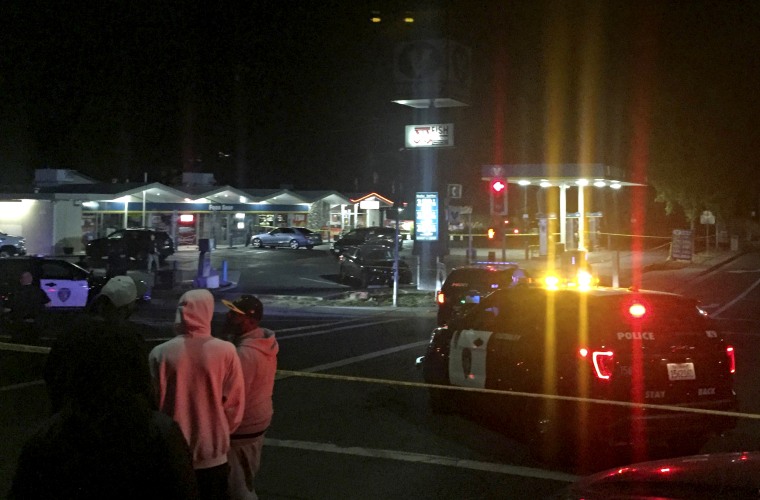In a strip mall parking lot this month in Vallejo, California, two strangers — one an off-duty police officer from a nearby town, the other a 38-year-old construction worker — squared off in a heated argument, according to witnesses.
The dispute on the evening of Nov. 10 ended with the officer shooting the construction worker, Eric Reason, who was declared dead at the scene — leaving his family with unanswered questions about the confrontation and how it could flare into violence.
But more questions were raised when a photograph taken by a witness showed something unusual: As Reason's body was sprawled on the ground, the officer appeared to hover over him to take a picture as a Vallejo Police Department officer stood by.

NBC News could not immediately verify the authenticity of the photo, and the witness did not want to be identified out of fear of retaliation, said Melissa Nold, an attorney who is representing Reason's mother and shared the image online.
"We're very concerned about the integrity of the VPD's investigation based on their failure to follow protocol by allowing a homicide suspect to corrupt the crime scene," Nold, a former law enforcement officer, said.
The off-duty officer was identified as Virgil Thomas, a police sergeant in the nearby Bay Area community of Richmond.
Michael Rains, an attorney whose firm is representing Thomas, said the officer was sequestered after the shooting and asked for legal counsel, but he was not arrested and has not been charged.
Nold contends that under officer-involved shooting protocol, Thomas should not have been permitted to stand freely where he could potentially disturb physical evidence.
Law enforcement experts say the idea that an officer involved in a shooting would also take photos is not routine.
"I've heard of it very rarely," said Ed Obayashi, a deputy sheriff in Plumas County, California, and a legal adviser for law enforcement agencies. "I would presume a lot of officers who are involved in a traumatic incident like that are usually in a state of shock. The last thing they're thinking is they need to take photos."
Both Vallejo and Richmond police did not return requests for comment about the photo and their policies for allowing officers, either on or off duty, to be near a body and collect evidence after their involvement in a shooting.
Vallejo police's standards of conduct says that officers cannot "communicate to suspected criminal offenders any information which might assist them in delaying or evading arrest or prosecution, or which might enable them to dispose of evidence or property related to an offense."
Vallejo, about 20 miles north of Oakland, has been under increased scrutiny after its officers were accused of excessive force and named in a string of force complaints. The fatal shooting of Bay Area rapper Willie McCoy by six officers in February led to citizens' demands for more transparency when weapons are used.
The latest shooting involved Thomas, a 27-year veteran of the Richmond force, and Reason, a father of six and a local rapper who went by the stage name Cheddaman.
Vallejo police said it and the Solano County District Attorney's Office were investigating the shooting. The district attorney did not respond to a request for comment.
Thomas remains on administrative leave from the Richmond Police Department, Rains said.
Vallejo police have not said what led Thomas to fire his weapon, but they did say that Reason had at least one gunshot wound.
According to the Richmond Police Officers Association, of which Thomas was a past president, deadly force may be necessary whenever an officer is "confronted with a felon armed with a firearm."
Rains said that according to Thomas, he and his wife were trying to pull into a parking space as Reason was trying to leave, and Thomas "tapped on the horn of his car" to stop Reason from pulling forward and potentially hitting him. Reason then got out of his car and "started swearing and threatening" Thomas, Rains said.
He added that Thomas tried to defuse the situation, but Reason grabbed a gun from his car. Vallejo police did not confirm if Reason was armed.
Rains said Thomas had to protect himself, not knowing if Reason was going to shoot him or his wife.
It's unclear how many shots were fired and if Reason fired a weapon, but Rains said he did not believe Thomas was injured.
A person who said they heard gunshots that evening told NBC News there was a barrage of about six shots, then a break before another seven shots.
Reason's mother, Stephanie Bass, said last week that she believes her son was running away when he was shot and would not have allowed the situation to escalate if he had known Thomas was an officer.
"He didn't deserve to die like that," Bass told NBC Bay Area.

Rains said last week that the investigation is moving forward and Thomas is providing a statement to investigators.
He said he did not know if the officer had taken photos at the scene, but said he could have done so to capture any relevant information because "if someone is shot, you're going to have a lot of people converging on the area."
Obayashi, the legal adviser for law enforcement agencies, said the situation would be similar to Thomas' being on duty and wearing a body camera and recording what he was seeing.
Robert Weisberg, a professor of criminal law at Stanford, said he was unaware of a situation where an officer involved in a fatal shooting would be near a body to take photos. But he doesn't believe doing so would break any laws.
"Criminal defendants are free to gather information in any legal way to help clear for a defense," Weisberg said.
Allowing an officer such access, however, can be misinterpreted by the public, who are not always given the same benefit, especially in the midst of a fatal shooting, he added.
"The perception that this will enable the officer to craft a self-interested story or that there will be some collusion by him and the potential prosecuting figures," Weisberg said, "that definitely doesn't look good."

